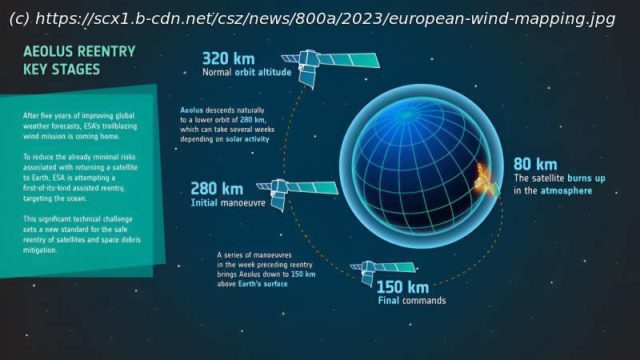A European wind-mapping satellite has returned successfully to Earth following a delicate assisted return designed to minimize damage from flying debris, the European Space Agency said on Saturday.
A European wind-mapping satellite has returned successfully to Earth following a delicate assisted return designed to minimize damage from flying debris, the European Space Agency said on Saturday.
It is the first time ESA’s mission control had attempted an assisted re-entry through the planet’s atmosphere.
The Aeolus satellite—named after the guardian of wind in Greek mythology—was launched in 2018 to measure Earth’s global wind patterns, and thus improve both short-term weather forecasting and our understanding of man-made climate change.
« Surpassing scientific expectations and exceeding its planned life in orbit, the Aeolus wind mission has been hailed as one of ESA’s most successful Earth observation missions, » the agency said on its website.
« And now, its end will go down in history too, thanks to the ingenuity of the agency’s mission control team, who guided this remarkable satellite down to Earth’s atmosphere for a safe reentry.






